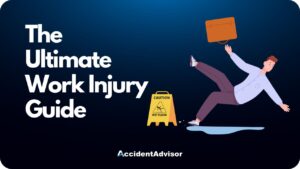According to the National Safety Council, the typical settlement for a rotator cuff injury at work is $49,116. Rotator cuffs can tear partially or fully as a result of chronic strain or an accident. As one of the most crucial parts of the human shoulder, rotator cuffs are often at the center of litigation involving workers’ compensation for injuries sustained in physically strenuous jobs or as the result of a workplace accident.
If you believe you could be entitled to compensation for a work-related rotator cuff injury, continue reading to learn more about typical settlements, the types of injuries you could sustain, how to treat them, and how to prove your case. Remember that a personal injury attorney is a critical ally in the process of winning compensation for your injury against your employer’s insurers.
Table of Contents
- How Many Rotator Cuff Injuries at Work Per Year?
- What is the Typical Settlement for a Rotator Cuff Injury at Work?
- Types of Work-Related Rotator Cuff Injuries
- What Factors Can Impact a Work-Related Rotator Cuff Injury Claim?
- How to Prove a Rotator Cuff Injury at Work?
- What Jobs are Most Likely to Result in Rotator Cuff Injuries at Work?
- Common Treatments for Rotator Cuff Injuries at Work
- What to Do After a Rotator Cuff Injury at Work?
- How Can a Work Injury Lawyer Help?
- Conclusion
How Many Rotator Cuff Injuries at Work Per Year?
According to the Bureau of Labor Statistics, there were 63,100 shoulder-related workplace injuries reported for 2020. The true number of injuries may be even higher since many rotator cuff injuries are asymptomatic and go unnoticed until a doctor discovers the issue during a routine checkup.
Combined with statistics for the general population that report over 4.5 million rotator cuff injuries every year, it’s clear that shoulders account for a major percentage of chronic use injuries.
The four rotator cuff muscles are vital stabilizers that promote the shoulder joint’s healthy function. However, they are not the only shoulder muscles that can be injured. Compensation for a rotator cuff injury at work requires medical documentation certifying that one of the rotator cuff muscles sustained the injury in question.
While other shoulder injuries could be compensated as well, a rotator cuff injury is likely more significant than a torn deltoid or trapezius, and therefore more costly to repair and rehabilitate. Locating the specific shoulder anatomy that is causing your pain is an important step to being compensated for your injury.
What is the Typical Settlement for a Rotator Cuff Injury at Work?
A torn rotator cuff often settles for over $49,000 according to NSC data, making it the sixth most expensive body part to cover. Workers’ compensation covers the economic damages of the injury, including the costs of treatment, medication, loss of work, and medical devices.
However, it does not cover pain and suffering, depression, or other factors of the injury. To pursue compensation for these factors, you would need to file a personal injury suit against your employer or business. Note that while workers’ compensation for an injury usually pays you regardless of who is deemed at fault for the accident, a personal injury case requires a determination of fault to arrive at a settlement.
This means that the evidence differs between these cases, as do the settlements. While a personal injury suit for a torn rotator cuff can settle for as much as $300,000, compensation can also be denied. Additionally, while workers’ compensation does not endanger your job, a personal injury suit makes you ineligible for work-related benefits in the future.
Types of Work-Related Rotator Cuff Injuries
Rotator cuff injuries at work can be inflammation injuries (tendonitis) or tears. Tendonitis usually results from chronic overuse while a rotator cuff tear often results from jobs that require heavy or repetitive lifting and can be split into two types of tears:
- A partial tear, sometimes called an “incomplete tear,” is when the tendons of the rotator cuff have been damaged but not severed.
- A complete tear, sometimes called a “full-thickness tear,” is when the tendons have totally dislocated from the bone.
These two types of tears can be either acute or degenerative depending on the context of the incident or the person’s job. Acute tears result from single traumas like a slip and fall while degenerative tears result from overuse.
The average settlement of a partial tear is more often on the low end for a work-related rotator cuff injury ($35,000), while a complete tear is much higher ($150,000+).
Though the work is often the cause of the injury, the employee’s training and behavior can impact how the work physically affects them. For example, improper lifting techniques and bad posture can put the body out of alignment during strenuous tasks. The result of these ergonomically harmful habits is a greater potential to injure important tendons like those in the shoulders.
What Factors Can Impact a Work-Related Rotator Cuff Injury Claim?
Several factors can impact your compensation for a rotator cuff injury at work, including the severity of your injury and your medical history. A rotator cuff injury claim considers the likelihood of your injury when compensating you for the damages, so pre-existing conditions can make a difference.
For example, if you have a history of shoulder tendonitis unrelated to your current job, workers’ comp may not pay you as much in your injury claim because you were predisposed to the injury. Your age also makes a difference since as we age, tendonitis and other shoulder injuries become more common regardless of the conditions of our jobs.
The severity of the injury also makes a difference since workers comp deals only with economic damages. If you require surgery, medication, medical devices, physical therapy, and more, you will be compensated more than if your injury will heal on its own.
How to Prove a Rotator Cuff Injury at Work?
The first step to proving rotator cuff injuries at work is to report the incident to your supervisor immediately so they can document the injury and begin the claims process. You will then need to gather evidence to present in your case.
For accidents that result in acute injuries, you can take photos of the scene and gather the contact information of any relevant witnesses. Your employer’s safety records can also be significant.
For chronic injuries resulting from repetitive movements, a claim for a work-related rotator cuff injury is harder to prove. Your medical records and the professional opinions of your healthcare providers will be more important in those cases. Getting an accredited medical professional to diagnose your injury as work-related is a significant factor in your favor.
What Jobs are Most Likely to Result in Rotator Cuff Injuries at Work?
The jobs most likely to result in rotator cuff injuries at work are those that include a risk of falling, require lifting heavy objects, or rely on repetitive physical activities such as driving.
Falling on the job can happen anywhere, but it is most common in jobs that require moving and lifting such as construction, roofing, utility repairs, painting, and more.
Lifting heavy objects, in addition to potentially causing a fall, can cause a rotator cuff injury on its own. The repetitive motion of lifting as well as the possibility of overworking the shoulder tendons with a heavy load makes these jobs susceptible to rotator cuff injuries at work, especially when employers have not properly trained workers on proper lifting techniques.
Driving is an example of a repetitive physical task that can cause long-term degeneration of the rotator cuff tendons. Even sedentary jobs such as office work can potentially lead to degeneration when combined with bad posture and repetitive motions, though these claims are the hardest to prove.
Additionally, athletes in shoulder-focused sports such as softball, baseball, and tennis are at an increased risk for rotator cuff tears due to these repeated motions.
Common Treatments for Rotator Cuff Injuries at Work
The most common treatments for work-related rotator cuff injuries involve rest, medication, and therapy. Your unique treatment plan and costs will depend on the severity and circumstances of your injury.
Around 80% of rotator cuff injuries are partial tears that can be treated without surgery. Conservative treatments for these injuries include an arm sling to keep the arm resting, drugs to fight inflammation, therapy and stretching to regain the use of the arm, or steroid injections to reduce swelling.
In cases involving a complete tear, surgery is often required to regain use of the shoulder. Potential procedures include tendon transfers, shoulder replacements, or scar tissue removal.
The amount of time you’ll need to take off work depends on the seriousness of the injury and the requirements of your job. For example, a rotator cuff injury in an office worker often only requires a week or two of leave before they can resume their duties. However, for those whose job requires the use of their shoulder, their recovery can take months.
What to Do After a Rotator Cuff Injury at Work?
If you seek compensation for a rotator cuff injury at work, you need to properly document your claim, be careful what you say following the accident, and seek out an experienced lawyer.
The first step after the incident or injury is to notify your supervisor and start documenting the scene, including photos and witness statements. You should then seek immediate treatment since a medical diagnosis is required to link your injury to your job. If you wait to see an accredited doctor, you may be denied workers’ compensation.
Next, you should speak with an accredited workers’ compensation attorney about how to proceed. You should be careful what you say to the insurers and your fellow workers as well as refrain from posting about the incident online. You may accidentally hurt your claim by admitting fault or downplaying your injuries.
How Can a Work Injury Lawyer Help?
A work injury lawyer can help you receive compensation by organizing your claim and informing your behavior. You may not know how to act around the insurance adjusters and workers’ compensation personnel without the help of an experienced attorney, which could impact your case.
Remember that the adjusters are not your ally. They are looking for ways to downplay or discredit your compensation claim. However, a workers’ comp attorney knows how to file your case, how the statute of limitations works in your state, how to get proper medical documentation for your injury, and how to control the outcome of your settlement.
Conclusion
A work-related rotator cuff injury is painful and costly, not only due to medical treatments but also to loss of work. Knowing the difference between types of rotator cuff injuries and their causes can help you make a successful claim through workers’ compensation. However, an experienced workers’ comp attorney is your best ally in receiving adequate compensation for a rotator cuff injury at work.

Rocky Horton
Author
Rocky Horton is a health and safety expert from Chapel Hill, NC. He is the founder of AccidentAdvisor and has been featured in Forbes, Bloomberg, and other publications. Learn more.













